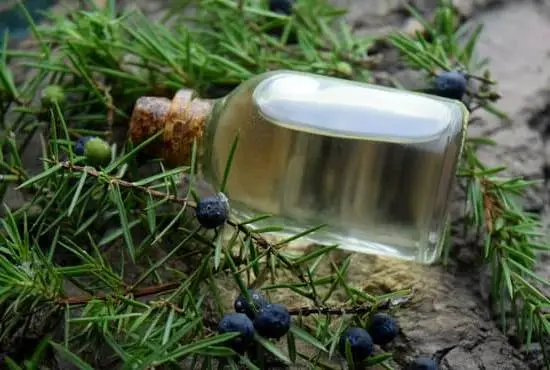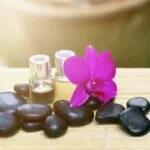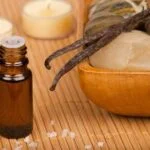Essential oils have been used for centuries for their aromatic and therapeutic properties, making them a staple in the practice of aromatherapy. In this article, we will delve into the fascinating world of essential oils and their many uses, exploring their historical roots, types, benefits, common uses, and practical applications in daily life. Whether you are a seasoned enthusiast or new to the world of aromatherapy, there is always something new to discover about these powerful natural remedies.
The history of essential oils dates back to ancient civilizations, where they were revered for their healing properties and fragrant scents. Throughout the years, essential oils have evolved in their use and application, remaining a popular choice for holistic wellness. We will take a closer look at how essential oils have been utilized through the ages and continue to be an integral part of traditional medicine and modern-day practices.
In this comprehensive guide, we will explore the origins and evolution of essential oils as well as provide insight into the various types available with their distinct aromas and therapeutic properties. Additionally, we will uncover the multitude of benefits that aromatherapy using essential oils offers for both physical and mental well-being. Join us on this enlightening journey as we delve into the world of essential oils and their remarkable impact on our health and daily lives.
Types of Essential Oils
When it comes to essential oils, there are numerous options available, each with its own unique aroma and therapeutic properties. These oils are derived from various plant sources and have been used for centuries for their healing and aromatic properties. Some of the most popular types of essential oils include lavender, tea tree, peppermint, eucalyptus, and lemon.
Lavender Essential Oil
Lavender oil is well-known for its calming and relaxing scent. It is often used to promote a sense of calm and help with sleep issues. Additionally, lavender oil has antiseptic and anti-inflammatory properties, making it a versatile option for both mental and physical well-being.
Peppermint Essential Oil
Peppermint oil is widely recognized for its invigorating scent and ability to alleviate headaches and digestive issues. It can also help improve focus, boost energy levels, and relieve muscle tension when used topically.
Tea Tree Essential Oil
Tea tree oil has powerful antibacterial and antifungal properties which make it a popular choice for treating skin conditions such as acne, eczema, and fungal infections. Its fresh, medicinal scent also makes it a favorite in many aromatherapy blends.
Incorporating these essential oils into your daily routine through aromatherapy offers a natural way to enhance both physical and mental well-being. Whether you use them individually or create custom blends, understanding the distinct aromas and therapeutic properties of different essential oils is essential for maximizing the benefits of aromatherapy.
Benefits of Aromatherapy
Aromatherapy has gained popularity over the years for its numerous benefits in promoting both physical and mental well-being. Using essential oils, aromatherapy has been utilized for centuries as a natural and holistic approach to improving overall health. The therapeutic properties of essential oils play a significant role in providing relief from various ailments and enhancing emotional wellness.
Physical Benefits
One of the primary purposes of aromatherapy is to provide physical benefits through the use of essential oils. Certain essential oils such as lavender, peppermint, and eucalyptus are known for their analgesic and anti-inflammatory properties, which can help alleviate pain and reduce inflammation.
Additionally, essential oils like tea tree oil and lemongrass have antimicrobial properties that make them effective in fighting off infections. Aromatherapy using these oils can also aid in improving sleep quality, boosting immunity, and even aiding digestion.
Mental Benefits
In addition to physical benefits, aromatherapy offers remarkable mental health benefits. Essential oils have been proven to have a direct impact on mood regulation, stress reduction, and cognitive function. For instance, the calming scent of lavender oil has been shown to reduce anxiety levels while citrus oils like lemon and orange can uplift mood and reduce symptoms of depression.
Aromatherapy can also promote mental clarity, improve focus, and enhance overall cognitive function. Many people turn to aromatherapy as a natural alternative to alleviate symptoms of stress, anxiety, and mood disorders.
Emotional Well-Being
Aromatherapy is widely known for its ability to support emotional well-being through the use of essential oils with powerful aromatic compounds. Scents such as rosemary and frankincense are believed to evoke feelings of relaxation while ylang-ylang and bergamot can promote feelings of joy and positivity.
Aromatherapy can be used to create a calming atmosphere at home or work environment by diffusing essential oils or incorporating them into massage treatments or baths. It’s evident that aromatherapy using essential oils offers a multitude of benefits not only for physical but also mental well-being.
Overall, the diverse range of purposes that essential oils serve in aromatherapy makes it an attractive option for those seeking natural remedies for their well-being concerns. Whether it’s relieving physical discomfort or supporting mental clarity and emotional balance, there’s an essential oil suitable for every need within the realm of aromatherapy. This makes it a versatile practice that continues to gain traction across wellness enthusiasts worldwide.
Common Uses of Essential Oils
When it comes to using essential oils, there are a variety of methods that can be employed for different purposes. Whether it’s for relaxation, improving mood, or relieving certain physical symptoms, essential oils can be utilized in several ways to maximize their benefits. Here are some common uses of essential oils and their specific purposes:
1. Diffusion: One of the most popular methods for enjoying the benefits of essential oils is through diffusion. By using a diffuser, the aromatic molecules of essential oils are dispersed into the air, creating a pleasant and therapeutic atmosphere. This method is excellent for purifying the air, promoting relaxation, and enhancing mental clarity.
2. Topical Application: Applying essential oils directly to the skin is another effective way to experience their various benefits. From massage to skincare, topical application can help address specific physical concerns such as muscle tension, inflammation, and skin conditions. It’s important to dilute essential oils with a carrier oil before applying them to the skin to avoid irritation.
3. Inhalation: Inhaling essential oils can have powerful effects on both the mind and body. Whether it’s through steam inhalation or simply taking a deep breath from a bottle, inhaling essential oils can provide relief from respiratory issues, improve concentration, and uplift one’s mood.
By understanding these different methods of using essential oils and their specific purposes, individuals can effectively incorporate aromatherapy into their daily routines for maximum well-being.
Top Essential Oils for Aromatherapy
When it comes to aromatherapy, essential oils play a crucial role in providing therapeutic benefits for both physical and mental well-being. Here is a list of essential oils that are commonly used in aromatherapy, along with their specific uses and benefits:
- Lavender: Known for its calming and soothing properties, lavender essential oil is often used to promote relaxation and alleviate stress and anxiety.
- Peppermint: With its invigorating scent, peppermint essential oil is popular for promoting mental clarity, easing headaches, and relieving nausea.
- Tea Tree: Renowned for its antimicrobial properties, tea tree essential oil is frequently used to treat skin conditions such as acne and fungal infections.
- Lemon: A refreshing citrus scent, lemon essential oil is commonly used to uplift the mood, enhance mental focus, and purify the air in aromatherapy diffusers.
In addition to the essential oils mentioned above, other popular options include eucalyptus, rosemary, chamomile, and bergamot. Each essential oil has its own unique aroma and therapeutic properties that make them suitable for various purposes in aromatherapy.
Apart from their aromatic qualities, essential oils can also be blended together to create customized scents that cater to specific needs. Whether it’s creating a relaxing blend for bedtime or an energizing blend for the morning, experimenting with different combinations of essential oils allows individuals to personalize their aromatherapy experience.
It’s important to note that when using essential oils for aromatherapy purposes, proper dilution guidelines should be followed to avoid adverse reactions. Additionally, individuals with certain medical conditions or sensitivities should consult a healthcare professional before using essential oils. By understanding the specific uses and benefits of different essential oils in aromatherapy, individuals can harness their potential for enhancing overall well-being.
Safety and Precautions
When using essential oils for aromatherapy, it is crucial to understand how to use them safely to avoid potential side effects and contraindications. One important aspect of safety when using essential oils is dilution guidelines. Most essential oils are highly concentrated and should be diluted with a carrier oil before applying to the skin. This helps prevent skin irritation or sensitivity reactions, especially for those with sensitive skin.
It is also essential to be aware of potential side effects when using essential oils. While these natural substances have many benefits, they can also cause adverse reactions in some individuals. For example, certain essential oils may cause allergic reactions or respiratory issues in some people. Additionally, some essential oils can be photosensitive, increasing the risk of sunburn if applied to the skin before sun exposure.
Contraindications are also an important consideration when using essential oils. Certain medical conditions or medications may interact with specific essential oils, leading to potential health risks. It’s important to research and understand any contraindications before using essential oils, especially if you have underlying health concerns or are taking prescription medications.
Overall, understanding these safety and precautionary measures is paramount for anyone interested in incorporating aromatherapy into their daily routine. By following dilution guidelines, being mindful of potential side effects, and considering any contraindications, individuals can safely enjoy the numerous benefits that essential oils offer for physical and mental well-being.
| Essential Oil | Primary Use |
|---|---|
| Lavender | Promotes relaxation and sleep |
| Peppermint | Relieves headaches and nausea |
| Tea Tree | Antibacterial and antifungal properties |
DIY Aromatherapy Blends
Aromatherapy is a holistic healing treatment that uses natural plant extracts, known as essential oils, to promote physical and mental well-being. These essential oils are extracted from various parts of plants, such as leaves, flowers, roots, and stems, and each type of oil carries its own unique aroma and therapeutic properties. DIY aromatherapy blends allow individuals to customize their own essential oil combinations to address specific needs and enhance their overall well-being.
Creating your own DIY aromatherapy blends can be a fun and rewarding experience. Whether you’re looking to relieve stress, improve sleep quality, or boost energy levels, there are countless essential oil combinations to explore. Some popular blends include relaxing lavender with uplifting citrus oils for a calming and refreshing scent, or soothing chamomile with earthy cedarwood for a tranquil and grounding effect.
To get started with creating your own essential oil blends, it’s important to understand the varying strengths of different oils and how they interact with one another. For instance, some oils are more potent than others and may need to be diluted with a carrier oil before use.
Additionally, certain essential oils may have similar properties that complement each other when blended together. Researching the therapeutic benefits of different essential oils is crucial in order to create effective DIY aromatherapy blends tailored to your specific needs.
| Popular Essential Oil Combinations | Benefits |
|---|---|
| Lavender + Bergamot | Relaxation, stress relief |
| Lemon + Peppermint + Eucalyptus | Cleanse the air, improve focus |
| Rosemary + Orange + Frankincense | Mental clarity, mood enhancement |
Incorporating Aromatherapy Into Your Daily Routine
Incorporating essential oils into your daily routine through aromatherapy can be a game-changer in enhancing your overall well-being. By understanding the origins, types, benefits, and common uses of essential oils, you can effectively integrate them into your everyday life for maximum impact. Whether it’s diffusing calming lavender oil in your bedroom before sleep or applying invigorating peppermint oil during a midday slump, the possibilities are endless for harnessing the power of aromatherapy.
One of the essential purposes of incorporating aromatherapy into your daily routine is to promote physical and mental well-being. The therapeutic properties of essential oils can help alleviate stress, improve sleep quality, alleviate headaches, boost concentration and focus, and even support respiratory health. By having a list of go-to essential oils and their specific uses handy, you can easily target areas of improvement in your daily life and tailor your aromatherapy experience to meet those needs.
Furthermore, integrating aromatherapy into your daily routine doesn’t have to be complicated or time-consuming. Simple practices such as adding a few drops of essential oil to a bath, using a diffuser throughout the day, or creating personalized DIY blends for specific purposes can seamlessly fit into any lifestyle.
With the myriad benefits that aromatherapy offers, taking small steps to incorporate essential oils into your daily routine can lead to profound improvements in both your physical and mental well-being. So why not start exploring the world of aromatherapy today?
Frequently Asked Questions
What Are the Essential Oils Used for in Aromatherapy?
Essential oils are used in aromatherapy for various purposes, including relaxation, stress relief, mood enhancement, and alleviating certain physical ailments. Each essential oil has its own unique properties and potential therapeutic benefits.
What Are the 10 Best Essential Oils to Try for Aromatherapy?
The 10 best essential oils for aromatherapy include lavender, peppermint, eucalyptus, tea tree, lemon, chamomile, rosemary, bergamot, frankincense, and ylang-ylang. These oils are popular for their calming, invigorating, and healing properties.
What Are the 5 Categories of Essential Oils?
Essential oils are categorized into five main groups: floral (such as lavender and rose), citrus (like lemon and orange), woody (including cedarwood and sandalwood), herbaceous (like basil and rosemary), and earthy (such as patchouli and vetiver). Each category offers its own unique aroma and therapeutic qualities.

Are you looking for a natural way to improve your health and wellbeing?
If so, aromatherapy may be the answer for you.





